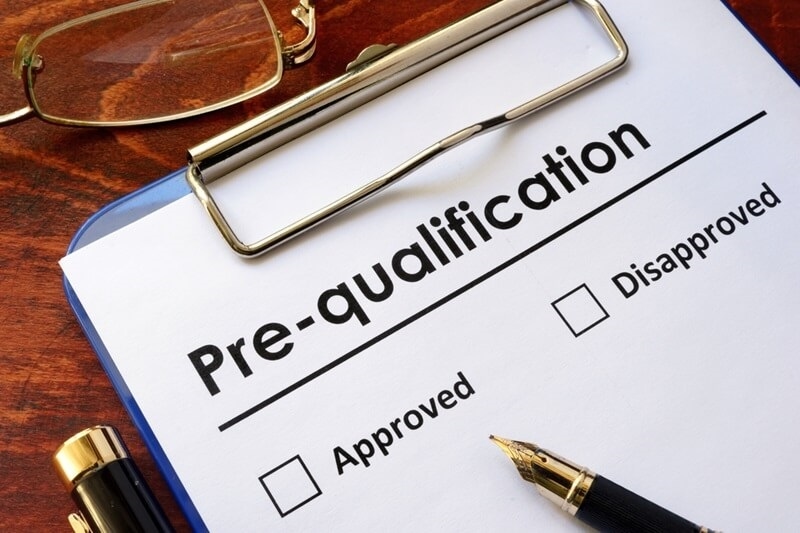
Getting a loan can seem like a lot, mostly if it’s your first time. There are many terms thrown around, like “prequalification,” “preapproval,” and “credit pulls,” and it’s easy to get lost. But one super helpful thing you can do is get prequalified for a loan. If you’re wondering where to even begin with a loan, starting here is a good move.
This blog will explain the loan prequalification process, its usefulness, and how it can make you feel better about borrowing money. We'll keep things simple, walk through each step, and give you the basics.
Loan prequalification is the first step when borrowing money. Prequalification is essentially a way to find out whether or not you would be approved for a loan without submitting a full application.
Essentially, it's like a preview. You provide the lender with some basic information and ideas about your income, employment, debts, and finances. The lender is then able to give you an idea of how much you might be able to borrow and what interest rate you would get. It is not set in stone, but it gives you an idea of what to expect.

People are mainly prequalified for a loan to save time and keep their credit score safe. It helps you figure out your approval chances without needing to fill out tons of forms or send in lots of paperwork. You give some basic details.
Here's why it's a good idea:
It’s a chill way to see what’s out there and feel more in charge before really applying.
When you start the loan prequalification, lenders will usually ask for:
You don’t have to prove anything at this point. That comes later if you choose to go ahead with the full application.
When you prequalify, the lender will check your credit. But it’s just a soft credit pull. That means they look at your credit history, but it doesn’t affect your credit score.
A soft credit pull gives lenders a general idea of how you’ve handled credit. They look at your credit score range, if you’ve missed payments, and how much debt you already have.
Since it won’t hurt your credit, it’s a safe and sound step to take first.
If you're thinking about your credit, you might wonder: Will prequalifying ding my score?
Good news: Nope, it won’t.
Since lenders only do a soft credit pull for loans, your score stays put. You’re good to go. Only hard credit pulls, which happen later when you fully apply for a loan, can drop your credit score a bit.
So chill out and check your options without stressing about your credit.
People often mix up preapproval and prequalification. They sound pretty similar, but they’re not quite the same thing.
So, both are helpful, but prequalification is faster, easier, and helps you make a decision about applying. Preapproval only happens when you’re ready to move forward and want a solid offer.
These days, lots of folks like applying for loans online. It’s quick, simple, and you can do it without leaving your couch. But how do you verify if you are eligible and avoid getting scammed? Here is what to do:
Only use websites that you know and trust. Ensure the website has a lock thingy in the corner of your screen and that the address starts with “https\://”. Big banks, credit unions, and well-known online lenders are usually good bets.
They shouldn’t ask for your whole social security number to just see if you qualify. Watch out if a website asks for really personal info too early.
Before you type in anything, make sure the site says they’ll only do a “soft” credit check. If they don’t say that, you might accidentally agree to a “hard” check.
Use prequalification to see what different loans are available. Check the interest rates, terms, and any fees before you pick one.
These steps will help you stay safe and keep your info private when you're checking your loan options online.
There are lots of times when it’s smart to check if you qualify for a loan, like:
It’s an easy way to see what’s out there without making a big move.
So, you’ve checked if you qualify. What’s next?
See what the lender is offering: how much you can borrow, what the interest rate will be, and what your payments might be.
Don’t just stop at one. Since checking if you qualify doesn’t hurt your credit, you can check with a few lenders to see who has the best deal.
If you like an offer, get ready to really apply. You’ll need:
Now the lender will check your credit for real and look at all your info. If everything looks good, you’ll get the official thumbs-up.
Like anything with money, there are good and bad things about checking if you qualify for a loan.
Usually, the good things are better than the bad – especially if you’ve never borrowed before.
Let's address some misunderstandings people have:
That is not true; it just means there is a chance. You can still apply for the loan and might be approved.
They only perform a "soft" credit check, which does not affect your credit score.
Actually, it saves time by not applying for loans you wouldn’t qualify for.
It is easy to check if you can receive a loan. You can see what kind of loans are available, be an informed shopper and see if you would be approved for any kind of loan, all while not hurting your credit.
If you prequalify online safely, you can obtain all the benefits (be informed) without risking your personal information. So if you are looking to borrow money to purchase a vehicle, home, or anything else, by all means do a check. It is the best way to borrow and be prepared.
This content was created by AI